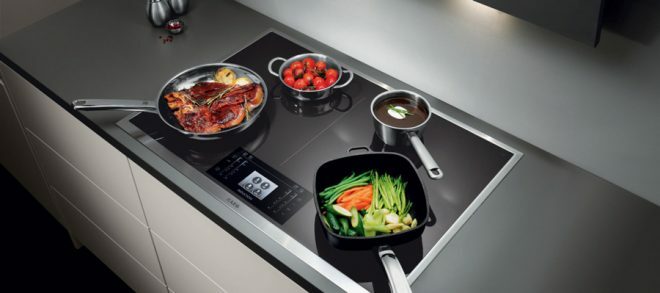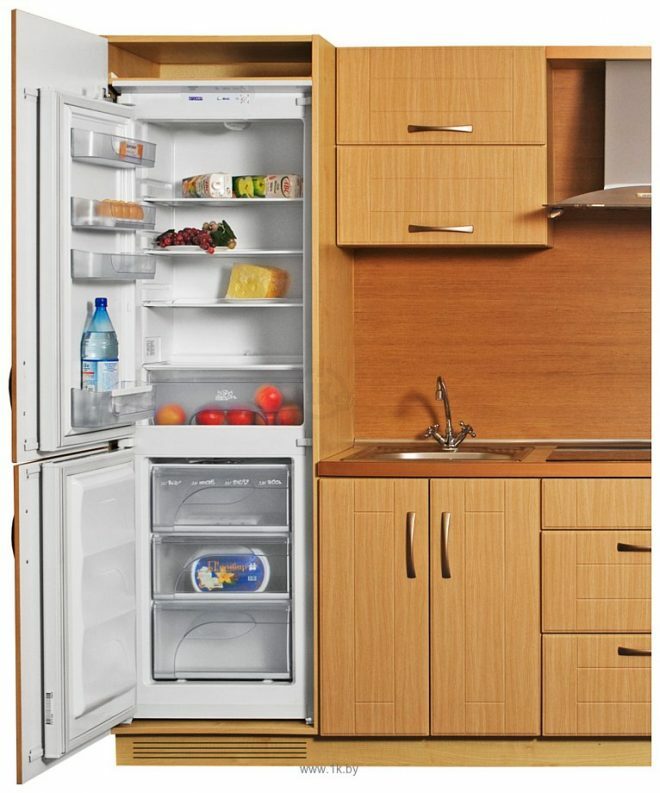The hood is one of the main electrical appliances in the kitchen. It purifies the air from dust, grease, water vapor and small particles that form during the cooking process. The socket for it is usually made separately, in the upper part of the kitchen. We will describe the rules and nuances of placing the outlet for the hood below.
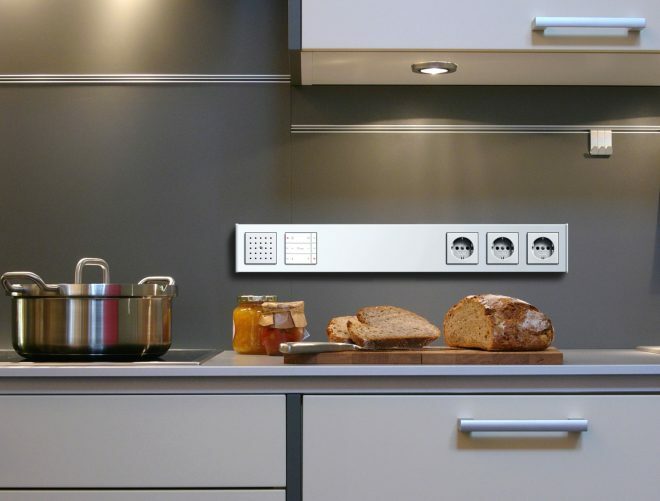
Types of electric cooker hoods
All kitchen air purifiers are powered by electricity. They are distinguished by the method of placement:
Attention! Earned on our website kitchen designer. You can familiarize yourself with it and design your dream kitchen for free! May also come in handy wardrobes designer.
- hinged;
- corner;
- island;
- built-in appliances.
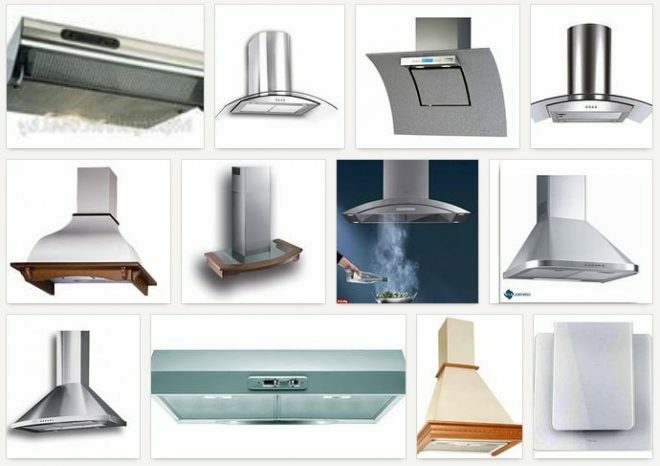
The most popular of all are hoods that are mounted inside the cabinet - the so-called built-in hoods.
Peculiarities
Depending on which model you have, you need to find a place for the outlet for the hood for the kitchen. It should be located nearby, since the device wire is usually no more than 80 cm. It is also advisable to position the outlet so that it does not catch the eye and does not spoil the interior of the kitchen. Depending on the type of hoods, their connection to the mains may be different.
The easiest way is to hide the outlet under the hood in the kitchen with built-in models. Then it is installed in the same cabinet as the device itself, slightly from the side. Another option is right above the headset. You need to mount it after choosing and installing furniture, or at least when you know exactly its location, the boundaries of the cabinets.
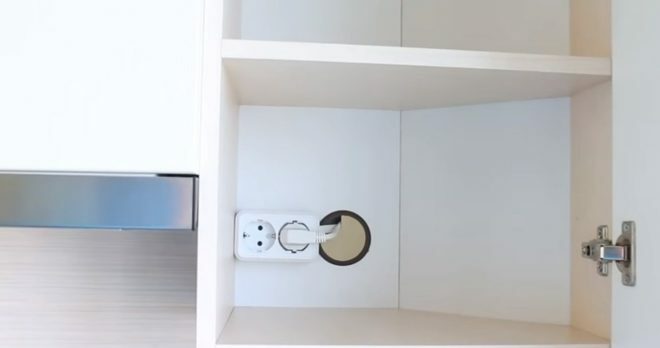
With suspended hoods, the power point can also be arranged in the nearest cabinet. A hole is made for this in the back wall of the furniture. For corner models, it is placed on the side of one of the walls - where it will be less noticeable. Often, the outlet is located above the level of the upper cabinets (from 10 to 30 cm). The closer it is to the closet (but not less than 5 cm), the less noticeable when viewed from a height of human growth.
Sometimes the outlet is hidden under the hood box. The most difficult thing is to make an electric point for island models invisible. If you are not satisfied with a socket on the ceiling, you can plug the appliance directly into the wiring. In this case, the plug is not used. The wires are connected directly by crimping, soldering or using terminals. Twisting by hand is not a secure fit. It is important that the connection is made with high quality, in compliance with safety measures.
Do not install the socket behind the cabinets so that furniture must be moved to access it. This is inconvenient and unsafe.
Choosing an electrical outlet and cable
In order for the connection to be safe, the kitchen outlet is chosen with a degree of protection from IP 42 and higher. Such products are completely protected from the penetration of dust particles and are resistant to droplets at an angle of less than 15 degrees. It is better to have protective shutters on the holes for the plug.
The thickness of the cable is determined by the total amperage. Usually this is from 15 A. The load on one line should not exceed 4 kW. If in total the devices turned on at the same time consume more than this value, you can extend a separate line from the new machine to the switchboard.
The power of the hoods is on average from 100 to 400 watts. These figures correspond to a current strength of 2 A. Wire thickness - from 1 to 1.5 mm sq. However, more often they use a three-core wire with a small margin - 2.5 mm square. Then, if necessary, you can connect another device to the outlet.
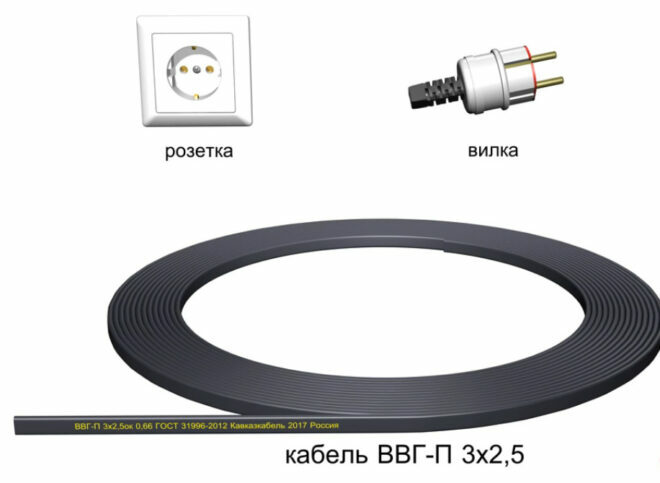
Image taken from https://www.youtube.com/watch? v = 3w0N8mCf1pE
Power point setting rule
When choosing at what height the outlet will be, it is necessary to observe the PUE (rules for electrical installations). They provide for the minimum distances from the network to other items in the kitchen:
- Up to furniture 5 cm.
- Up to ventilation 20 cm.
- Up to the hood body 30 cm.
- At least 30 cm from the edge of the sink and the hob.
- If the outlet for the hood and the wires pass through the furniture, they should be additionally insulated. The wires are placed in a steel casing with a corrugated surface. Sockets are not mounted to a tree or chipboard, but to a fireproof base.
A socket close to the stove can melt and quickly become clogged.
The height of the outlet for the hood is on average:
- From the floor 180 - 200 cm.
- From the table top 100 - 110 cm.
The height of the outlet under the hood in the kitchen varies depending on the model of the hood and the height of its location above the stove: 75 cm is left above the gas, 65 cm above the electric. 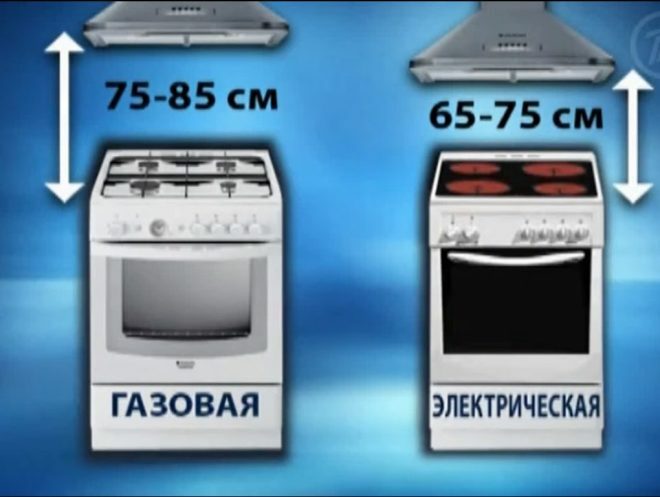 To calculate the height of the outlet for the hood in your kitchen, you need to add the height of the device itself (from 15 to 30 cm) and 5 cm (1/2 the height of the outlet) to the distance from the stove to the hood.
To calculate the height of the outlet for the hood in your kitchen, you need to add the height of the device itself (from 15 to 30 cm) and 5 cm (1/2 the height of the outlet) to the distance from the stove to the hood.
Installation of electrical outlets in compliance with PES
If you have the slightest doubt about your abilities, it is better to entrust this work to a specialist. Remember that most residential fires are caused by faulty wiring. Professional installation of a socket includes the following steps:
- Determine the place where to make an outlet for the hood. It is better to do this when the hood has already been purchased, furniture has been installed.
- Disconnect the machine in the control room. You need to make sure with a tester or multimeter that there is no voltage at all.
- Lead the cable in the wall. It is placed in grooves (grooves in the wall) made during kitchen renovations.

Image taken from https://www.youtube.com/watch? v = 8fR-51jk4cs
- Prepare the cable for connection. The insulation layer is removed from the outside by 20 cm, the wires are exposed and cut by 5-10 cm. One edge is attached to the panel board, the other to the outlet.
- Mount the socket box, align it and fix it with screws. In this case, the fastening "mustache" diverge and firmly hold the product in the wall. It is best if these clips are long enough. After installation, the socket should not dangle, be pulled out of the wall if you pull the plug.
- The current supply wire is led into the terminal and fixed with a screw. The extra wires are hidden inside the box. A ground wire goes into the middle hole, and “zero” and “phase” go to the extreme ones.
- Mount the front of the socket.
- Connect the cable to the switchboard. Check if the appliance works after plugging it into an outlet.
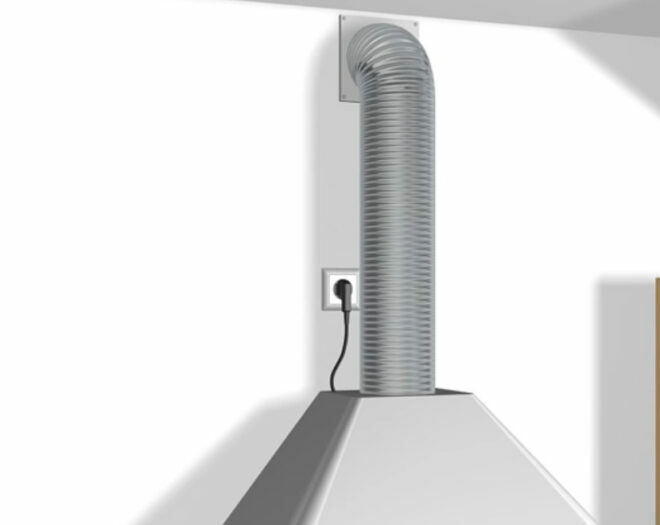
Image taken from https://www.youtube.com/watch? v = 8fR-51jk4cs
Connecting an electrical outlet
If you have not dealt with electricity before, it is better to call an electrician or someone you know who understands. If you wish, you can do it yourself with strict adherence to safety precautions. The main thing is to understand exactly the purpose of each wire:
- brown (main color), white or red - phase;
- blue and cyan - zero;
- some have earth - green or yellow (yellow-green).
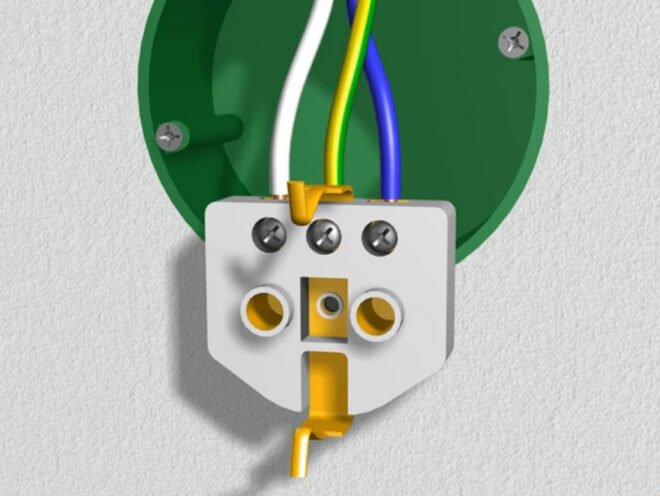
Image taken from https://www.youtube.com/watch? v = 8fR-51jk4cs
You need to connect them to the outlet, each in its place. Tightening the wires is considered less reliable than clamping or soldering. When installing the terminals, you need to be careful not to pinch the wires too much.
The power of electrical appliances in the kitchen
The more the family and the more often they cook on the stove, the more powerful the hood is needed. What power is needed can be calculated by knowing the parameters of the kitchen (the volume of the room is multiplied by 12). The most powerful appliances in the kitchen are:
- Oven 2.5 - 4 kW.
- Cooking surface 1 - 6 kW.
- Washing machine 1 - 3 kW.
- Dishwasher 0.5 - 2.8 kW.
This technique consumes less energy:
- Microwave oven 1.5 - 3 kW.
- Coffee maker up to 1.5 kW.
- Electric kettle 1 - 2 kW.
- Electric grill 1 - 2 kW.
- Refrigerator 0.15 - 0.2 kW.
- Exhaust hood up to 0.5 kW.
Also in the kitchen there are many small appliances that are used from time to time, rarely turn on together. The power of most of them does not exceed 1 or 2 kW.
- toaster;
- mixer;
- blender;
- waffle iron;
- sandwich maker;
- electric dryer.
When calculating the number of phases, the total load on the kitchen must be taken into account. If it is less than 4 kW, it is permissible to use one source. If more - for security purposes, at least 2 sources are required. Each group must have its own RCD machine. It provides automatic emergency shutdown in case of current leakage.
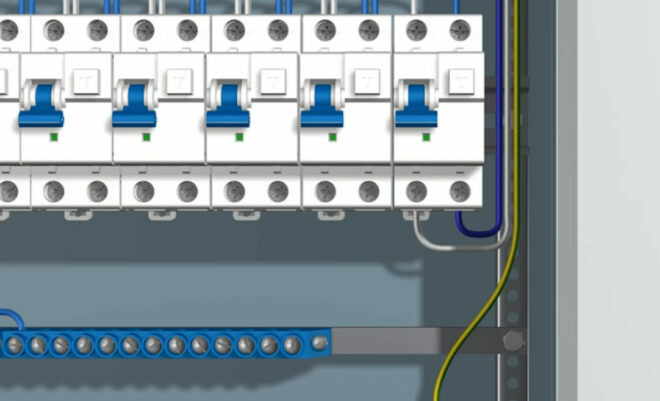
Image taken from https://www.youtube.com/watch? v = 8fR-51jk4cs
For all living quarters, copper wiring with a thickness of at least 1.5 mm square is used. In order for the wire to fit exactly, you can choose with a margin - a section of 2.5 mm square. With a mains voltage of 12 V, a transformer is needed.
Layout of sockets in the kitchen
Most of the outlets are arranged during the repair phase. Then the cable is built into the wall, you can't see it. It fits into specially prepared grooves - grooves. Some kitchen styles (like loft) allow exposed wires.
Relocating a built-in outlet is always a hassle. You will need to re-lay the grooves, putty the surface of the wall, cover it with paint or wallpaper. It is difficult to do this locally so that the place is not conspicuous. It is better to provide enough outlets at once, when renovating a room.
All sockets are placed on three conventional lines:
- At the bottom of the kitchen - usually in the basement section under the furniture at a distance of 20 - 30 cm from the floor. Usually this is at least 4 sockets: for a stove, dishwasher, washing machine, refrigerator. The socket for the stove must be rated for 25 A; a separate line is allocated for it.
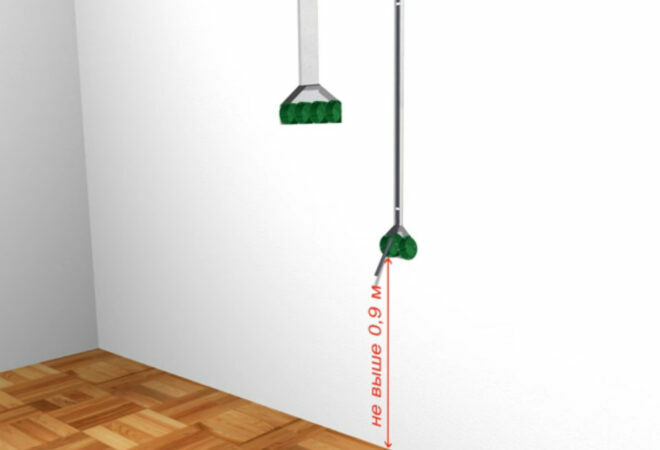
Image taken from https://www.youtube.com/watch? v = 3w0N8mCf1pE & t = 98s
- In the middle row (at the level of 1 - 1.5 m) there are sockets for electrical household appliances, which are placed on the table. This is a microwave oven, toaster, grill, electric kettle and others. The work surface requires at least 5 outlets. It is better to organize 2 blocks of 3 sockets. You can position them closer to the work surface or to the upper cabinets. You can provide sockets that are hidden in the countertop.
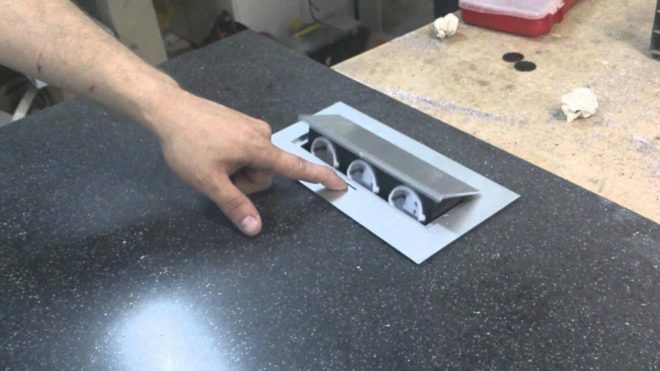
- Above they make an outlet for the hood in the kitchen, given the location of the device itself. Here you can also place the sockets for the illumination.
If you plan to have an island in the kitchen, lead out the wires to the sockets in the floor.
Number of sockets
The number of outlets is calculated based on the energy consumed and the list of electrical appliances in the kitchen. So that there is no overload in the network, separate outlets are allocated for the stove, dishwasher and washing machine (who has it in the kitchen). Do not place sockets near a water source or near a stove.
The outlet should be conveniently located not only for the hood, but also for other electrical appliances. You can accurately plan the location of sockets and switches if you draw a plan of furniture, electrical household appliances, lighting fixtures. Sockets and lighting are advised to be divided into 2 different groups, so that each receives power from its own machine.
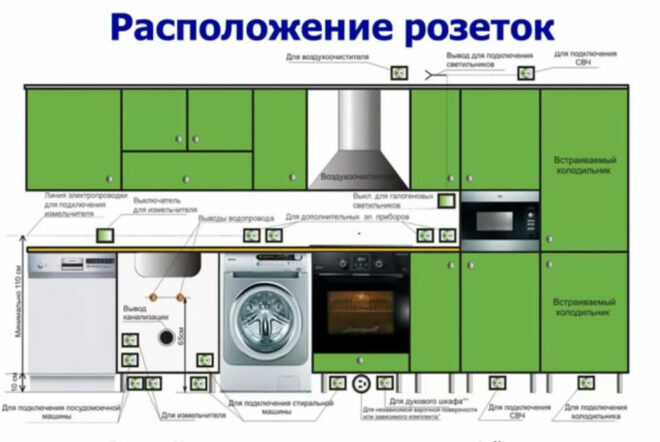
Image taken from https://www.youtube.com/watch? v = gekO_BhXvN8
It is better to plan the number of outlets with a margin. All people use gadgets, they often turn on chargers for phones and tablets in the kitchen. 1 - 2 pieces are recommended to be installed in the dining area. The total number is usually at least 10 - 14 pieces.
So that sockets, an electrician do not spoil the design of the kitchen, you need to think in advance where they will be located, how you can hide them. However, remember the most important thing - convenience and safety.
average rating 5 / 5. Number of ratings: 1
No ratings yet. Be the first to rate.
